Worldcon Drama Again

 Another month, another meltdown on the Worldcon/Hugos front. Can’t we be better than this? Apparently not.
Another month, another meltdown on the Worldcon/Hugos front. Can’t we be better than this? Apparently not.
Early this year there was a huge fuss when DisCon 3 released policies suggesting that they would effectively be limiting the number of people who could be part of a finalist group to 4. Naturally a bunch of people were upset by this, and it ended up with most of the WSFS Division people resigning, and then with one of the co-chairs resigning. There were promises that things would be done better.
Then the list of Hugo Finalists was announced, and there was more drama, mostly because DC3 had failed to explain conversations that had taken place with Strange Horizons regarding their listing of some 87 or so people. This misinformation resulting from that is still being widely spread. You can see an explanation of the situation here.
This month an email was sent to Finalists explaining that, contrary to promises made in January, only 4 people from each Finalist group (and their +1s) would be allowed at the pre-ceremony reception. It wasn’t entirely clear why, but space and budget seemed likely explanations. There was also a strange comment about only 38 people being allowed on stage at any one time, which I can only interpret as a dig at Strange Horizons. No one had bothered to check how many people from each Finalist were actually planning to be at the ceremony.
Shortly thereafter most of the Hugo Admin team, and the head of WSFS Division, resigned. Apparently they had been unhappy, not only with the email they had been told to send out, but also with other aspects of how DC3 was planning to treat the Hugos.
As I am a finalist this year, I got to hear rather more about this than most people. In particular we got invited to a meeting (organised by the ever-resourceful Mary Robinette Kowal – thanks MR!) with a couple of representatives of the convention. One of those was Gadi Evron, the head of Events, and therefore the man in charge of putting on the Hugo ceremony. He assured us that there were no problems with space or budget.
All of which means that the email sent to finalists contained information that neither the Hugo Admin team, nor the people involved in running the ceremony, agreed with. I took a look at the organisation chart of the convention, and it was clear that there was only one person with the actual authority to overrule two separate divisions in that way.
Shortly thereafter, the one remaining con chair resigned.
There is, by the way, a potential issue with regard to time. I understand that there has been a lot of pressure on Gadi and his team to keep the ceremony time down below two hours. That’s understandable given last year’s embarrassing blow-out. However, the more categories we have, and the more people who are part of winning teams, the harder that becomes. Also if you are doing a hybrid ceremony to bring in winners who can’t attend, that is likely to add to the time. There’s a real conflict that Gadi has to deal with here, and maybe he can’t make everyone happy. My own view is that as long as the show is good, people won’t mind how long it runs. They only complain about the time the ceremony takes when they are bored stupid by it.
That is where we are at the moment. We do have a new head of the WSFS Division (commiserations, Linda Deneroff). We don’t yet have a new Hugo Admin team, but that will doubtless appear soon. And the con currently has no chair. Thankfully Worldcon is a dinosaur and is perfectly capable of running around for a few weeks without its head.
Naturally there has been much wailing and gnashing of teeth. Lots of people are asking why this keeps happening, and what we can do to stop it happening again. Over at File 770 the retired colonels of fandom are harrumphing away about kids these days. Apparently this is all the fault of Strange Horizons, middle-class British people, and Archive of Our Own. I don’t think they have blamed woke liberals and the Black Lives Matter campaign yet, but I’m sure it is coming.
But what can we do? Not much. There is one administrative fix that I will get out of the way first, but a proper solution will be much harder to make happen.
In traditional Worldcon organisation charts, WSFS Division exists to manage the three things that every Worldcon is mandated to do: run the Hugo voting, Site Selection and the Business Meeting. But this doesn’t make a lot of organisational sense. The Hugo ceremony is normally run by Events (and the post-ceremony party by someone other than the Worldcon). The Business Meeting is a program item. And Site Selection is done at a table in the Exhibits Hall. It might make more sense to split the WSFS functions between those three divisions, because they have nothing to do with each other save for all being mandated by the WSFS Constitution. At Glasgow in 2005 Kevin and I had the whole of WSFS as part of Events, and that seemed to work OK.
That might help, but it is only a small fix. It doesn’t get to the root cause of the problem, which is that each Worldcon is a law unto itself, and all too often it ends up re-inventing the wheel. Lots of people are asking for more institutional knowledge to be passed on from one year to the next, but we’ve been asking for that for decades now and it doesn’t work. Nicholas Whyte, the recently departed head of WSFS Division, has oodles of experience of running the Hugos. He seems to have quit because he felt that he wasn’t being listened to. Gadi Evron was Deputy Division Head of Events in New Zealand, so he has masses of experience of what not to do, and certainly sounds like he learned a lot from it.
The problem is not individuals, the problem is the system. It is the bidding system, which encourages committees to become emotionally attached to the idea that they need to show they can put on the Best Worldcon Ever. It is the one-year nature of the event, which means that individual Worldcons have no incentive to consider the long-term good of the event, the Hugos and WSFS. And it is the total lack of meaningful sanctions for any Worldcon committee that messes up.
Various people have been calling for the Hugos to be separated from Worldcon, and a permanent (possibly professional) organisation to be set up to run them. The trouble is that most of the people calling for this have no idea how to make it happen, and that means that it won’t. It is possible, but it requires people to do some actual work. And yes, it means that significant numbers of people have to attend the Business Meeting.
In fact the first thing that you will need to do is destroy the Business Meeting, because if you don’t the people who go there every year will just reverse your changes the minute you stop paying attention. I know that a lot of people, Kevin included, enjoy the BM, but ultimately it is a means to an end. Participatory democracy is wonderful in theory, but once you get above a few hundred people in your community it becomes unworkable. It wouldn’t even have worked in Athens if they had given women, slaves and foreign-born residents a vote. (This may surprise you, but Kevin agrees with me on this.)
So you need to change the WSFS Constitution to make it into a membership-based organisation that has some sort of elected management. And you need to put that management in charge of running the Hugos. There’s a lot else that you could do as well, but that’s the absolute minimum and when it comes to getting things through the Business Meeting the less that you have to debate the better. One you have got rid of the BM it will be a lot easier to make other changes.
If people want to do this, I’m sure that Kevin would be happy to help draft the necessary legislation. I can’t bring it forward myself as I am barred from entering the USA, but I’d be happy to help drum up support.
Oh, and then you will need to make sure that you are a WSFS member and that you help to ensure that sensible people get elected to the management group. The reason that fandom has always been so heavily opposed to having such a thing is that if the wrong people get elected to such a thing, then you are totally and utterly screwed. Us middle class Brits can attest to that fact, because we (as a nation) voted in a far-right government with a massive majority.

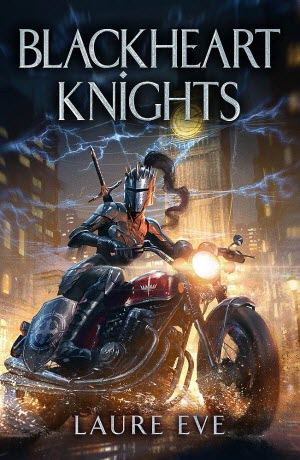 Arthuriana is clearly in the air at the moment. We have had the massively different takes of Legendborn and SisterSong, both of which I loved. We have Spear due from Nicola Griffith coming very soon. And we also have Blackheart Knights from Laure Eve. It has a woman in armour on a motorbike on the cover. How could I possibly resist?
Arthuriana is clearly in the air at the moment. We have had the massively different takes of Legendborn and SisterSong, both of which I loved. We have Spear due from Nicola Griffith coming very soon. And we also have Blackheart Knights from Laure Eve. It has a woman in armour on a motorbike on the cover. How could I possibly resist?

 OK, before I start I have to explain something. Leopards and hyenas are natural enemies. Firstly, the lazy bastards keep stealing our prey by ganging up on us in huge numbers. And secondly, unlike leopards who are creatures of impeccable taste, hyenas are exactly the sort of vile creatures who would eat people’s faces. It was probably them who started that horrible meme in the first place.
OK, before I start I have to explain something. Leopards and hyenas are natural enemies. Firstly, the lazy bastards keep stealing our prey by ganging up on us in huge numbers. And secondly, unlike leopards who are creatures of impeccable taste, hyenas are exactly the sort of vile creatures who would eat people’s faces. It was probably them who started that horrible meme in the first place.
 Yoss, I am told, is a legend of Cuban science fiction. I am ashamed to say that this book is the first I had heard of him. If you haven’t either, there’s an interview with him
Yoss, I am told, is a legend of Cuban science fiction. I am ashamed to say that this book is the first I had heard of him. If you haven’t either, there’s an interview with him 


 This is the May 2021 issue of Salon Futura. Here are the contents.
This is the May 2021 issue of Salon Futura. Here are the contents. A Master of Djinn
A Master of Djinn Fugitive Telemetry
Fugitive Telemetry Defekt
Defekt The Vanished Birds
The Vanished Birds Requiem Moon
Requiem Moon The Old Guard
The Old Guard Wonder Woman 1984
Wonder Woman 1984 Editorial – May 2021
Editorial – May 2021 In honour of a new P. Djèlí Clark book, we have a steampunk cover for this issue. Image by
In honour of a new P. Djèlí Clark book, we have a steampunk cover for this issue. Image by 
 This is a book I have been wanting for some time. Pretty much since I finished reading The Haunting of Tram Car 015 to be precise. I didn’t know then that a novel was in the works, but I am very pleased that it was.
This is a book I have been wanting for some time. Pretty much since I finished reading The Haunting of Tram Car 015 to be precise. I didn’t know then that a novel was in the works, but I am very pleased that it was.
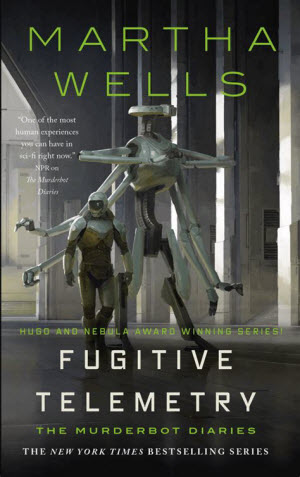 What can you say about a new Murderbot book? Surely you all know the set-up by now? Martha Wells doesn’t have to do much beyond roll her beloved creation on stage and let readers watch him in action. How long can she keep this up for? Well, The Rise and Fall of Sanctuary Moon has at least 397 episodes. Surely Murderbot will want to last at least as long as its favourite soap opera.
What can you say about a new Murderbot book? Surely you all know the set-up by now? Martha Wells doesn’t have to do much beyond roll her beloved creation on stage and let readers watch him in action. How long can she keep this up for? Well, The Rise and Fall of Sanctuary Moon has at least 397 episodes. Surely Murderbot will want to last at least as long as its favourite soap opera.
 Welcome back to the wild and whacky world of LitenVärld. Yes, the world needs more silly stories about weird Scandinavian megastores selling flatpack furniture, and Nino Cipri is just the person to provide them.
Welcome back to the wild and whacky world of LitenVärld. Yes, the world needs more silly stories about weird Scandinavian megastores selling flatpack furniture, and Nino Cipri is just the person to provide them.
 Simon Jimenez is one of the finalists for this year’s Astounding Award. I had been unaware of his debut novel until recently. It is now in the top ten list for Debut Novel in this year’s Locus Awards. And the other day Roz Kaveney phoned me up to rave about it. I can take a hint.
Simon Jimenez is one of the finalists for this year’s Astounding Award. I had been unaware of his debut novel until recently. It is now in the top ten list for Debut Novel in this year’s Locus Awards. And the other day Roz Kaveney phoned me up to rave about it. I can take a hint.
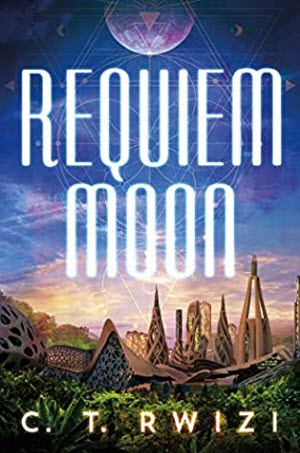 Having enjoyed Scarlet Odyssey, I was very pleased when Julie Crisp offered me book 2 in the series, Requiem Moon. This is what I’m assuming is book 2 of a trilogy, so CT Rwizi has his work cut out making it more than just moving the plot along. Mostly, I think, he succeeds, because he provides a story to anchor this book. This review will contain spoilers for book 1.
Having enjoyed Scarlet Odyssey, I was very pleased when Julie Crisp offered me book 2 in the series, Requiem Moon. This is what I’m assuming is book 2 of a trilogy, so CT Rwizi has his work cut out making it more than just moving the plot along. Mostly, I think, he succeeds, because he provides a story to anchor this book. This review will contain spoilers for book 1.
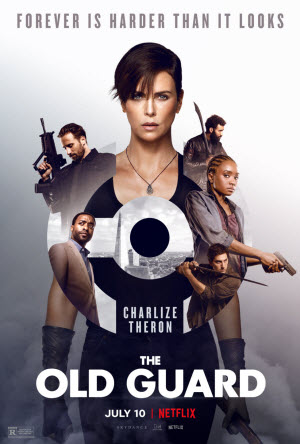 Like many people I was initially very excited by the trailers promising Charlize Theron as an immortal Amazon warrior in the present day. But the initial reactions were underwhelming so I put The Old Guard on my “watch later” list. It wasn’t until the film got to be a Hugo finalist that I got my act together and watched it.
Like many people I was initially very excited by the trailers promising Charlize Theron as an immortal Amazon warrior in the present day. But the initial reactions were underwhelming so I put The Old Guard on my “watch later” list. It wasn’t until the film got to be a Hugo finalist that I got my act together and watched it.
 I’ve been avoiding Wonder Woman 1984 for some time because it seemed like no one had a good word for it. But some things have to be done. You never know, the extras might be good. For the first film they were absolutely superb.
I’ve been avoiding Wonder Woman 1984 for some time because it seemed like no one had a good word for it. But some things have to be done. You never know, the extras might be good. For the first film they were absolutely superb.
 This is the April 2021 issue of Salon Futura. Here are the contents.
This is the April 2021 issue of Salon Futura. Here are the contents. A Desolation Called Peace
A Desolation Called Peace The Falcon and the Winter Soldier
The Falcon and the Winter Soldier Victories Greater Than Death
Victories Greater Than Death A Winter Worldcon
A Winter Worldcon Advanced Triggernometry
Advanced Triggernometry Rev
Rev Shadow of a Dead God
Shadow of a Dead God Soul
Soul This issue’s cover is the fabulous work that Ben Baldwin produced for the forthcoming Chaz Brenchley novel,
This issue’s cover is the fabulous work that Ben Baldwin produced for the forthcoming Chaz Brenchley novel, 
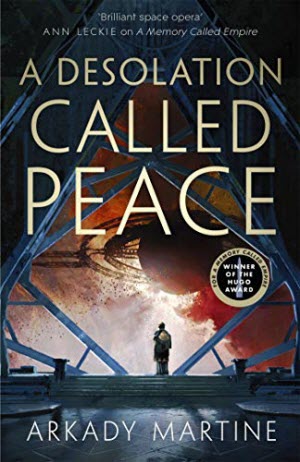 How do you follow up on a stunning debut novel that won a Hugo Award? Well, more of the same sounds like a good idea. With A Desolation Called Peace, Arkady Martine delivers exactly what fans will have been hoping for.
How do you follow up on a stunning debut novel that won a Hugo Award? Well, more of the same sounds like a good idea. With A Desolation Called Peace, Arkady Martine delivers exactly what fans will have been hoping for.
 Well that was something. I suspect that if you are not as deeply immersed in the Marvel Comics Universe as I am, this series will have come over as rather odd. I’ve also noticed some dissatisfaction among what I might call Left Twitter. But, when you consider the constraints on the series, I think it did rather well. Explaining why will have to take us deep into spoiler territory.
Well that was something. I suspect that if you are not as deeply immersed in the Marvel Comics Universe as I am, this series will have come over as rather odd. I’ve also noticed some dissatisfaction among what I might call Left Twitter. But, when you consider the constraints on the series, I think it did rather well. Explaining why will have to take us deep into spoiler territory. This book marks Charlie Jane Anders’ first foray into YA. I have no idea what actual teenagers will make of it, because it is several centuries since I was last a teenager and tastes have doubtless moved on. What I will say is that to an ancient person like myself, Victories Greater than Death certainly sounds like modern teenagers.
This book marks Charlie Jane Anders’ first foray into YA. I have no idea what actual teenagers will make of it, because it is several centuries since I was last a teenager and tastes have doubtless moved on. What I will say is that to an ancient person like myself, Victories Greater than Death certainly sounds like modern teenagers.
 So, Worldcon in December it is. What are we supposed to make of this?
So, Worldcon in December it is. What are we supposed to make of this? Yes, there is a sequel. Can we all say, “Yee ha!”
Yes, there is a sequel. Can we all say, “Yee ha!”
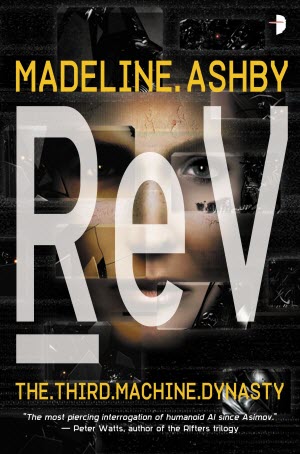 This review is a little late in coming, but then Madeline Ashby took quite a while to produce the third book in the Machine Dynasty series, so I hope she’ll forgive me. As is fairly inevitable, a review of a third book is a series is going to be a bit spoiler-full, so if you haven’t read vN or iD you may want to look away now.
This review is a little late in coming, but then Madeline Ashby took quite a while to produce the third book in the Machine Dynasty series, so I hope she’ll forgive me. As is fairly inevitable, a review of a third book is a series is going to be a bit spoiler-full, so if you haven’t read vN or iD you may want to look away now.
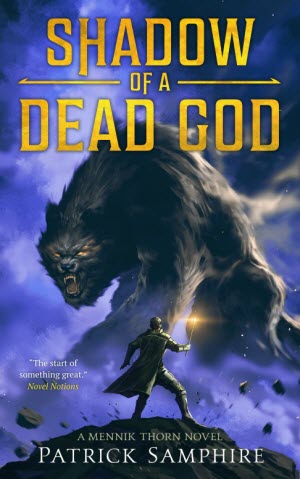 Reading lots of books isn’t always easy. Sometimes you need something to help you along. So instead of going for something heavy and intense, you look for something that will be fun. Tim Pratt’s books tend to do that for me, but I didn’t have anything of his to hand this month so I turned to Patrick Samphire, hoping he would do the trick.
Reading lots of books isn’t always easy. Sometimes you need something to help you along. So instead of going for something heavy and intense, you look for something that will be fun. Tim Pratt’s books tend to do that for me, but I didn’t have anything of his to hand this month so I turned to Patrick Samphire, hoping he would do the trick.
 Here’s the first of my looks at this year’s Dramatic Presentation: Long Form Finalists. Soul comes well recommended. It has won Oscars for Best Animated Feature and Best Original Score; and was a Finalist in Best Sound. It has also won BAFTAs and Golden Globes. In fact, it has won so many awards that Wikipedia has created a separate page to list them all.
Here’s the first of my looks at this year’s Dramatic Presentation: Long Form Finalists. Soul comes well recommended. It has won Oscars for Best Animated Feature and Best Original Score; and was a Finalist in Best Sound. It has also won BAFTAs and Golden Globes. In fact, it has won so many awards that Wikipedia has created a separate page to list them all.
 This is the March 2021 issue of Salon Futura. Here are the contents.
This is the March 2021 issue of Salon Futura. Here are the contents. Ten Low
Ten Low WandaVision
WandaVision In Veritas
In Veritas Fireheart Tiger
Fireheart Tiger Is WSFS Fit for Purpose?
Is WSFS Fit for Purpose? Gendering Time, Timing Gender
Gendering Time, Timing Gender The Last Days of Pompeii
The Last Days of Pompeii The Fall of Koli
The Fall of Koli SisterSong
SisterSong This issue’s cover is once again from PixaBay. The artist account for this one is deactivated so I’m not sure who created it. Anyway, it was suitably science fictional.
This issue’s cover is once again from PixaBay. The artist account for this one is deactivated so I’m not sure who created it. Anyway, it was suitably science fictional.
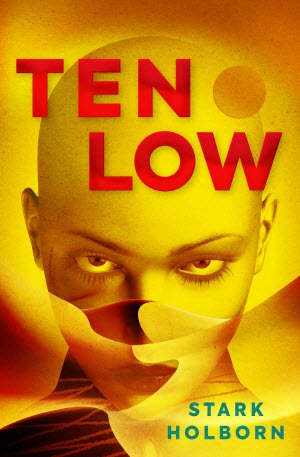 Remember that thing about The Mandalorian being a Western in space? Now imagine what it would be like if an actual writer of Westerns were to do science fiction. That writer is, of course, Stark Holborn. Ten Low is her first foray into science fiction.
Remember that thing about The Mandalorian being a Western in space? Now imagine what it would be like if an actual writer of Westerns were to do science fiction. That writer is, of course, Stark Holborn. Ten Low is her first foray into science fiction.
 So many thoughts. So many complicated thoughts.
So many thoughts. So many complicated thoughts. This year’s short list for the Crawford Award (for debut fantasy books) included a number of interesting books that I didn’t read. The Crawford doesn’t have a jury as such, it has a recommendation team who are not obliged to read everything that is eligible, but try to cover it all between them. Unfortunately for me, many of the recommendations tend to come in during January and February when I have little time to read due to LGBT History Month, and time is short because the Award has to be presented at ICFA. However, anything that turns up on the short list tends to be interesting, so I’m trying to get to the rest of it now.
This year’s short list for the Crawford Award (for debut fantasy books) included a number of interesting books that I didn’t read. The Crawford doesn’t have a jury as such, it has a recommendation team who are not obliged to read everything that is eligible, but try to cover it all between them. Unfortunately for me, many of the recommendations tend to come in during January and February when I have little time to read due to LGBT History Month, and time is short because the Award has to be presented at ICFA. However, anything that turns up on the short list tends to be interesting, so I’m trying to get to the rest of it now.
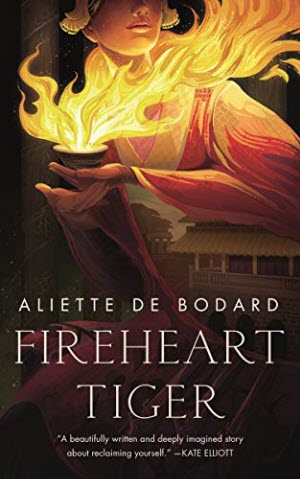 Did I mention that Aliette de Bodard keeps getting better with each new book? I’m pretty sure I said that in my review of Seven of Infinities. And now we have Fireheart Tiger. Guess what?
Did I mention that Aliette de Bodard keeps getting better with each new book? I’m pretty sure I said that in my review of Seven of Infinities. And now we have Fireheart Tiger. Guess what?
 One of the things I greatly admire about Francesca and the crew at Luna Press Publishing is their commitment to non-fiction. Obviously I benefit from that in terms of being published in their Academia Lunare series, but they also do serious academic work.
One of the things I greatly admire about Francesca and the crew at Luna Press Publishing is their commitment to non-fiction. Obviously I benefit from that in terms of being published in their Academia Lunare series, but they also do serious academic work.
 Sometimes I am hoist by my own petard. When Farah Mendlesohn suggested a theme of “Catastrophe” for this year’s Historical Fictions Research Network conference, I immediately wondered what novels there were about Pompeii. When I remembered that Edward Bulwer-Lytton had written a very famous one, I knew I had a perfect topic for a paper. Unfortunately, that meant that I had to read the book.
Sometimes I am hoist by my own petard. When Farah Mendlesohn suggested a theme of “Catastrophe” for this year’s Historical Fictions Research Network conference, I immediately wondered what novels there were about Pompeii. When I remembered that Edward Bulwer-Lytton had written a very famous one, I knew I had a perfect topic for a paper. Unfortunately, that meant that I had to read the book. We have reached the third and final volume of Mike Carey’s Rampart Trilogy. It is a long time since I read this book, but it is very memorable.
We have reached the third and final volume of Mike Carey’s Rampart Trilogy. It is a long time since I read this book, but it is very memorable.
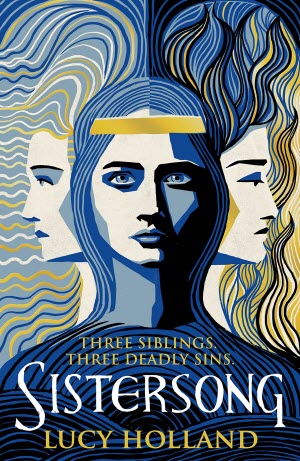 Here’s another book that I had a very small part in creating. Lucy Holland is better known as Lucy Hounsom, one of the co-hosts of the Breaking the Glass Slipper podcast. She has a fantasy trilogy out under her own name, but the silliness of modern publishing is such that she has to adopt a new name for this new venture, even though most people know exactly what is going on.
Here’s another book that I had a very small part in creating. Lucy Holland is better known as Lucy Hounsom, one of the co-hosts of the Breaking the Glass Slipper podcast. She has a fantasy trilogy out under her own name, but the silliness of modern publishing is such that she has to adopt a new name for this new venture, even though most people know exactly what is going on.

 This is the January 2021 issue of Salon Futura. Here are the contents.
This is the January 2021 issue of Salon Futura. Here are the contents. Legendborn
Legendborn The Four Profound Weaves
The Four Profound Weaves Queen of the Conquered
Queen of the Conquered Seven of Infinities
Seven of Infinities Remote Control
Remote Control SHIELD – Season Seven
SHIELD – Season Seven Star Trek: Discovery – Season Three
Star Trek: Discovery – Season Three His Dark Materials – Season Two
His Dark Materials – Season Two Star Trek: Lower Decks – Season One
Star Trek: Lower Decks – Season One